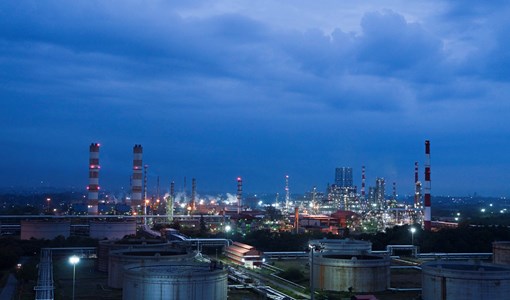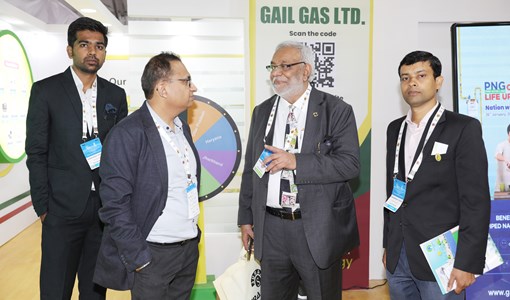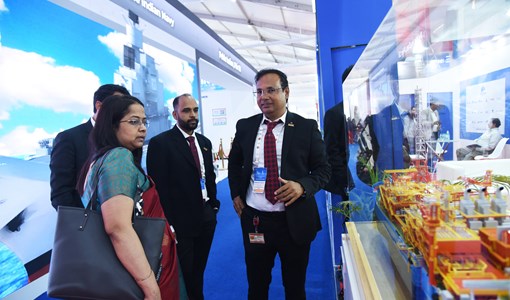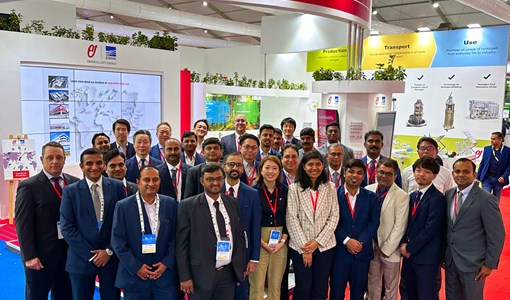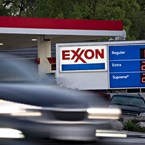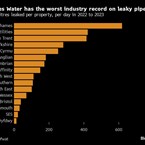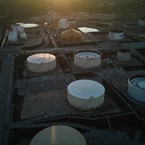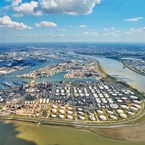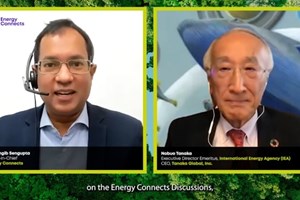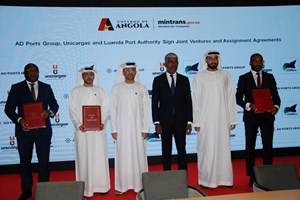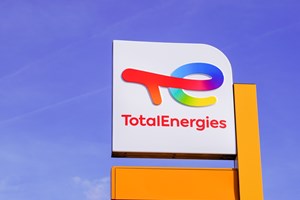The ongoing growth of the LNG industry
McDermott looks to the future and identifies how the business can cope with the expected demand for its product. Pipeline Magazine’s Julian Walker speaks to Don Hill, global vice president, LNG.
The LNG industry is expected to play a significant role in the growing global demand for natural gas. To satisfy this demand growth, a commitment to new LNG projects is necessary, according to Hill.
Hill has kept a watchful eye on the LNG industry over his 42 years in the business and claims now is the most exciting period he has seen. When he started working in the LNG industry in 1977 there were only a half dozen exporting countries and the LNG trade was less than 13 MTPA.
“Back then a 1.5 MTPA LNG train was considered world scale” Hill says.
In 2018 approximately 320 MT of LNG were traded, almost 25 times the amount in 1977, equivalent to an 8 per cent compounded annual growth rate.
He says: “For many years two or three LNG trains were awarded each year. The trains got a little larger and the LNG trade grew at a steady pace. This allowed a small group of companies to manage the work, with only a small number of people moving from project to project. This resulted in a very experienced group, but little opportunity for that group to expand.”
“Things changed in 2004 and 2005 when we saw a major wave of LNG project awards centered in the Middle East. At that time the U.S. was viewed as a major importing market. That wave of activity stands out as a step change in the industry and coincided with growth in other industries to create a significant global demand for equipment and materials leading to rising costs and execution challenges including the availability of human resources. This situation provided an opening for new players to enter the LNG industry. However, these new entrants acquired their expertise by a redistribution of the experienced resources previously held within the LNG Club.
“Historically LNG pricing has been linked to the price of oil. With the rapid recovery of the price of oil and consequently LNG after the financial crises of 2007 and 2008 combined with the demand shock following the Fukushima Daiichi nuclear disaster in Japan in 2011 the LNG business was very attractive and the capacity build out continued in two more waves. The first was in Australia. The U.S., which was experiencing a shale gas revolution, followed closely behind.
“A period of high LNG prices at the same time the as U.S. domestic production acceleration led to a rare period between 2011 and 2015 with almost no LNG demand growth. This situation coupled with the higher than normal periods of project awards resulting in a fear of an impending supply overhang. When the oil price dropped in 2014, driving the price of LNG down, the attraction to sanction more projects quickly faded. This situation resulted in a period from 2016 through most of 2018 with very few new project awards.
“About the time everyone decided to postpone sanctioning new projects the demand situation changed again. China declared war on pollution and coupled with a period of low LNG prices the demand took off again. The LNG market grew by 11.4 per cent in 2017 and 9.5 per cent in 2018. The rapid demand growth, driven largely by China, along with delays in the startup of some of the facilities has essentially eliminated the anticipated supply overhang.
“If this demand growth were to continue we could soon be in a supply shortfall. Recognising this opportunity new projects are racing in to fill the potential supply gap,” adds Hill
LNG growth
Hill says: “My rule of thumb for the annual growth rate for the LNG business has always been around 7 per cent. If you look back 10, 20, 30, or 40 years, the CAGR over each of those periods is very close to 7 per cent. Growth rates in individual years have generally stayed in a band of 4 per cent to 12 per cent, with recent rates toward the higher end of this range; the 2011 to 2015 period being an exception.”
Most forecasts for the next 20 – 25 years have adopted a conservative growth estimate of 4 per cent.
“All the additions to production from trains that are currently under construction (~95 MT) or have started up since the end of 2018 are just capable of meeting this conservative demand growth in the time it will take for them to be completed,” Hill says. “If the growth rate over the next five years is closer to the long-term average we need another 43 MT to be awarded this year. This can be satisfied by just two more projects like Mozambique Area 1 and the Qatar North Field Expansion.
“The addition of a number of well positioned projects that have already completed FEEDs would add enough production capacity to satisfy the higher end of the historic demand growth range of 12 per cent. Expansion trains at existing facilities have always been among the most competitive and, thanks to existing strong relationships with LNG buyers, are good bets to move forward sooner. However, I expect the sanctioning of most of those projects to be delayed until there is a clearer picture of the demand growth.”
Hill says: “For most of my career, the question has rarely been ‘if a project will go’, but rather ‘when will the project go’.”
He says that the large number of projects currently being promoted, especially in the Gulf Coast, would significantly exceed the LNG market demand growth, and that the market will decide which of the projects go first.
Hill adds, “I use a number of criteria to rank projects including: does the project have committed offtake; do the developers of the project have stranded resources that have no other route to market; and how experienced are the developers? The uncertainty surrounding the trade war situation with China, the primary driver of LNG demand growth, is another hurdle for U.S. projects that have not already reached FID.
“LNG is a global business, and there are plenty of projects outside of the U.S. that can take up the slack. There is likely to be several more projects sanctioned this year and even into next year, then I would expect new EPC awards to slow down again while we work off this wave.”
LNG a core business
LNG allows McDermott to bring much of its vertically integrated capabilities to bear to provide its customers unique and competitive solutions.
Both McDermott and CB&I were active in the LNG business prior to their, merger last year.
McDermott was recognised as a leader in the offshore and upstream sector as well as fabricating many of the complex modules for LNG facilities like Yamal and Gorgon. CB&I, prior to the combination, did all the concept development for Yamal LNG, the first LNG project to go through the Russian project permitting process.
From its beginning as the recognised leader for the design and construction of cryogenic storage tanks, CB&I went on to become one of the major global LNG construction companies for both regasification and liquefaction facilities. In 2006 CB&I focused on becoming one of the key players in the LNG liquefaction EPC club and was awarded its first full LNG liquefaction EPC project for the Peru LNG project in 2007. Since then, CB&I has been continuously involved in all phases of LNG projects.
The McDermott and CB&I combination enabled the new McDermott to offer the most complete solutions to the LNG industry of any company in both services and scope: from concept to operation, and from reservoir to end user.
Hill says: “McDermott is a member of the LNG Club and is unique in the breadth of our vertically integrated offering: concept development, engineering, procurement, construction, module fabrication, installation hook-up, initial operations; nobody else can bring the full band-width we have.”
“To grow our LNG business, McDermott is focused on maintaining and strengthening relationships with our customers, partners, and main suppliers. We see our job as providing solutions that make our customers competitive. We are also focused on attracting and retaining the best people. McDermott is willing to invest in both technology and execution know-how to be able to maintain and grow our delivery capability.”
This interview appears in the September issue of Pipeline Magazine
KEEPING THE ENERGY INDUSTRY CONNECTED
Subscribe to our newsletter and get the best of Energy Connects directly to your inbox each week.
By subscribing, you agree to the processing of your personal data by dmg events as described in the Privacy Policy.
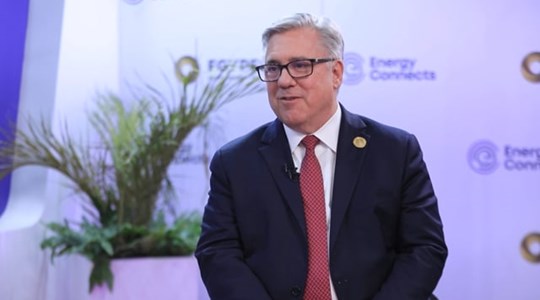
Chevron helping drive Egypt’s journey to become Africa’s energy powerhouse
Mar 11, 2024
Energy Workforce helps bridge the gender gap in the industry
Mar 08, 2024
EGYPES Climatech champion on a mission to combat climate change
Mar 04, 2024
Fertiglobe’s sustainability journey
Feb 29, 2024
P&O Maritime Logistics pushing for greater decarbonisation
Feb 27, 2024
India’s energy sector presents lucrative opportunities for global companies
Jan 31, 2024
Oil India charts the course to ambitious energy growth
Jan 25, 2024
Maritime sector is stepping up to the challenges of decarbonisation
Jan 08, 2024
COP28: turning transition challenges into clean energy opportunities
Dec 08, 2023
Why 2030 is a pivotal year in the race to net zero
Oct 26, 2023Partner content

Ebara Elliott Energy offers a range of products for a sustainable energy economy

Essar outlines how its CBM contribution is bolstering for India’s energy landscape

Positioning petrochemicals market in the emerging circular economy

Navigating markets and creating significant regional opportunities with Spectrum





